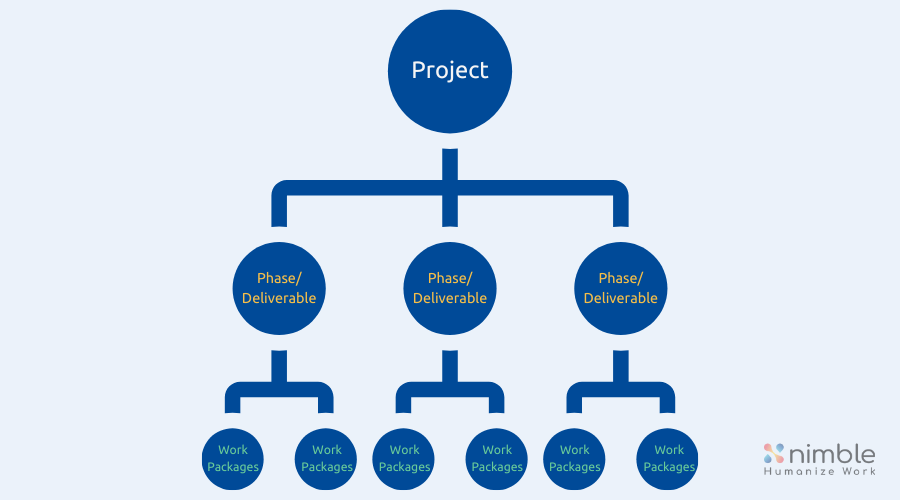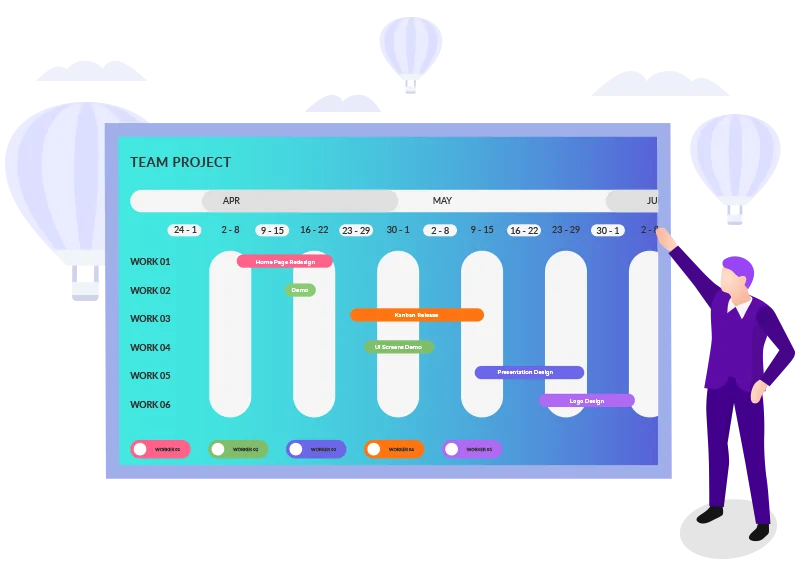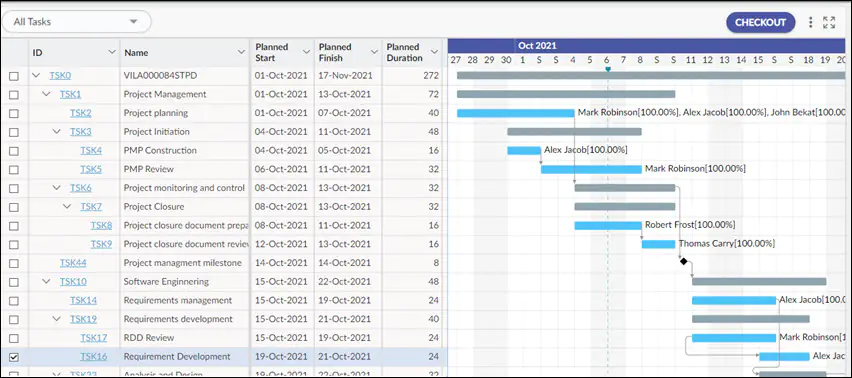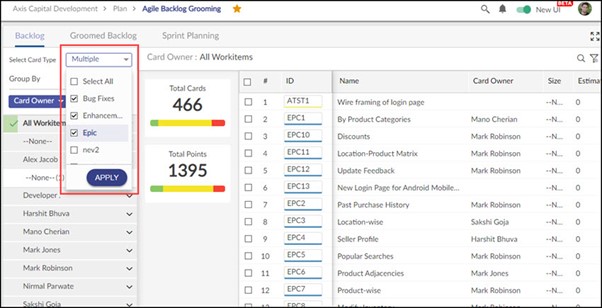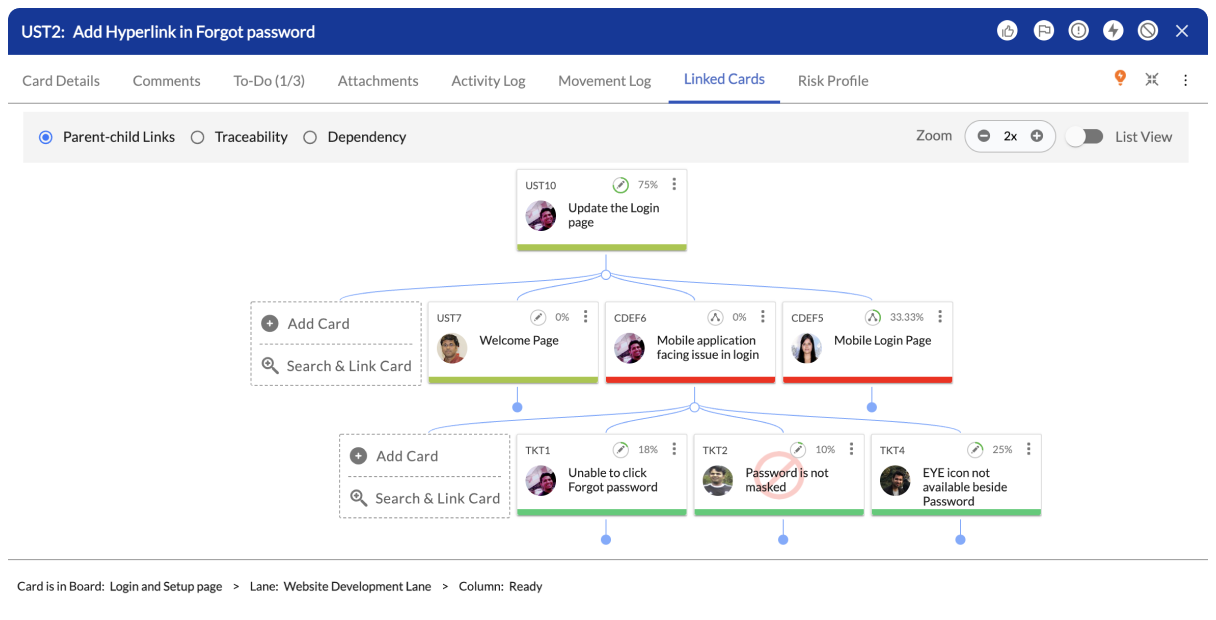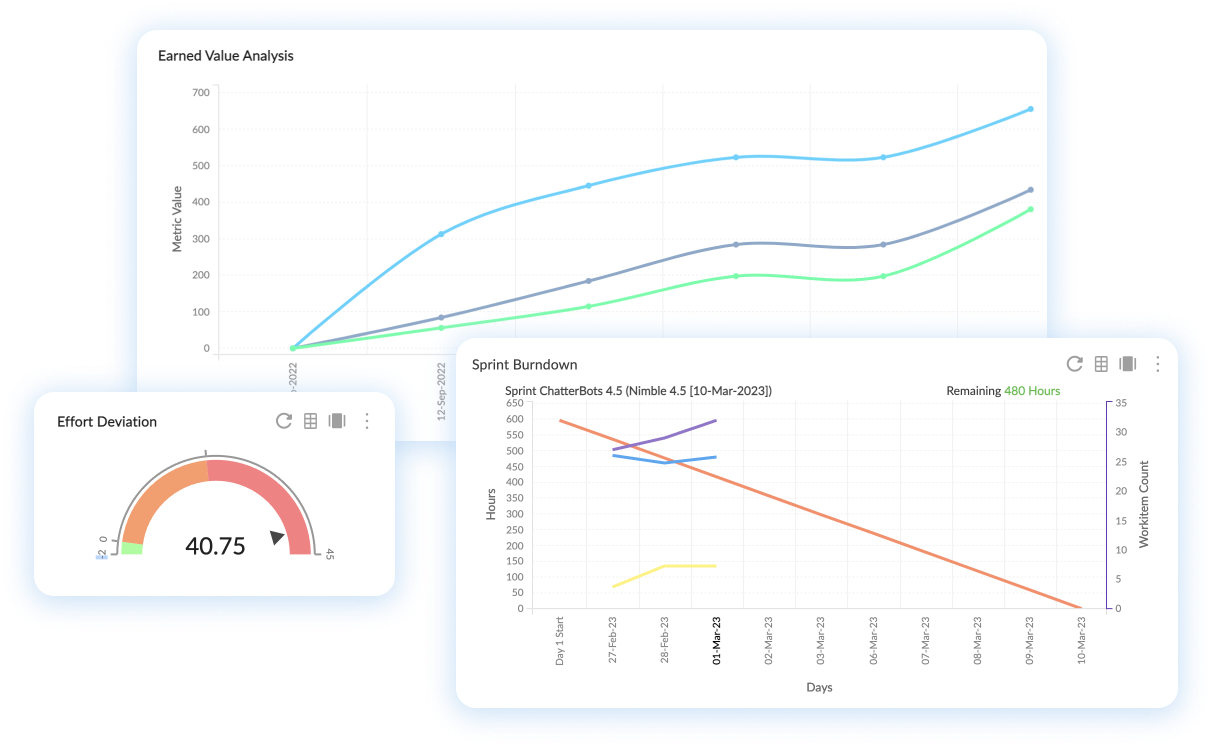In project management, effective planning is paramount to success. Whether you are using a waterfall approach or an agile approach, effective planning is crucial to project success. Among the myriad tools at a project manager’s disposal, the Work Breakdown Structure (WBS) stands out as a foundational element, especially for traditional or waterfall projects. This hierarchical decomposition of project scope into manageable components is instrumental in organizing, planning, and executing projects across various industries and methodologies. In this article, we delve into the significance of the WBS, its role in detailed project planning, and its application in different project management contexts.
A Brief History
The Work Breakdown Structure (WBS) has its origins in the mid-20th century, evolving primarily in industries such as defense, aerospace, engineering, and construction. Although there isn’t a single definitive origin, the concept evolved over time as project management practices advanced.
Organizations like NASA and management consulting firms played a significant role in promoting its use. The WBS found application in managing complex projects, including the development of military weapons systems, space exploration programs, construction projects like the Hoover Dam, and the Boeing 747 aircraft. Its structured approach to breaking down project scope into manageable components proved valuable in coordinating tasks, resources, and activities. Today, the WBS remains a fundamental tool in project management, with applications across various industries and methodologies, including software development.
What is a WBS?
A Work Breakdown Structure (WBS) is a roadmap for project managers, offering a structured approach to breaking down the project scope into smaller, more manageable components. This hierarchical decomposition, organized into levels, focuses on deliverables and tasks, facilitating better planning, execution, and control of projects.
Here are the 6 key elements of a WBS:
1. Hierarchy: A WBS is organized in a hierarchical structure, typically starting with the highest level, which represents the project itself, and then breaking down into increasingly detailed levels of work packages or tasks. The hierarchy can be depicted graphically using boxes or tables, with each level representing a different level of detail.
2. Deliverables-Oriented: The WBS is focused on deliverables, meaning it breaks down the project into tangible outcomes or results that the project is intended to produce. Each level of the hierarchy represents a more detailed aspect of these deliverables, ultimately defining the smallest work components necessary to complete the project.
3. Decomposition: The process of creating a WBS involves decomposing the project scope into smaller, more manageable elements. This decomposition continues until the work packages are small enough to be easily understood, estimated, assigned, and monitored.
4. Scope Control: The WBS helps in controlling the project scope by clearly defining what is included in the project and what is not. Anything that is not explicitly included in the WBS is considered out of scope for the project, helping to prevent scope creep and ensure project focus.
5. Mapping to Work Packages: Each level of the WBS hierarchy represents a different level of detail, with the lowest level consisting of individual work packages or tasks that can be easily assigned to team members and managed independently.
6. Visualization Tool: The WBS serves as a visual representation of the project scope and structure, making it easier for project stakeholders to understand the project’s breakdown and dependencies.
Overall, the WBS is a critical tool in project management as it provides a structured approach to defining, organizing, and managing project work, ultimately contributing to the successful completion of projects within scope, schedule, and budget constraints.
Objectives of a WBS
The Work Breakdown Structure (WBS) is a fundamental tool in project management, serving several objectives:
1. Project Scope Definition: One of the primary objectives of a WBS is to define and decompose the project scope into manageable and understandable parts. It breaks down the project deliverables into smaller, more manageable components, making it easier to plan, execute, and control the project.
2. Task Organization and Assignment: A WBS helps in organizing project tasks hierarchically, allowing project managers to assign responsibilities to team members more effectively. By breaking down the project into smaller tasks and subtasks, it becomes clearer who is responsible for what, leading to better accountability and coordination within the team.
3. Resource Allocation: With a detailed breakdown of project tasks and deliverables, resource allocation becomes more precise. Project managers can identify the resources (human, financial, material, etc.) required for each task or work package within the WBS, facilitating efficient resource management throughout the project lifecycle.
4. Cost Estimation and Budgeting: By associating each work package or task with its corresponding cost, a WBS enables accurate cost estimation and budgeting for the project. It provides a basis for determining the cost of individual components, aggregating costs at various levels of the WBS hierarchy, and establishing an overall project budget.
5. Schedule Development: A well-structured WBS serves as a foundation for developing project schedules. By breaking down the project into manageable components, project managers can create schedules that outline the sequence of activities, dependencies between tasks, and milestones to be achieved. This aids in ensuring timely completion of the project.
6. Risk Management: The WBS helps in identifying and managing project risks by providing a structured view of project components. Project managers can assess risks associated with each work package or task, prioritize them based on their impact and likelihood, and develop appropriate risk mitigation strategies.
7. Communication and Stakeholder Engagement: A WBS provides a visual representation of the project scope and structure, which facilitates communication and engagement with stakeholders. It helps stakeholders understand the project’s breakdown, milestones, and dependencies, fostering transparency and alignment among project participants.
Overall, the WBS serves as a cornerstone for effective project planning, execution, monitoring, and control, contributing to the successful delivery of projects within scope, schedule, and budget constraints.
How to Build a WBS Effectively?
Crafting an effective WBS involves several key steps, including defining project objectives, identifying major deliverables, decomposing deliverables, involving key stakeholders, organizing work packages, utilizing WBS tools, and maintaining flexibility. Collaboration, documentation, and clear communication are essential throughout the process to ensure completeness and accuracy.
Here are some key steps for project managers to create a comprehensive WBS:
1. Define Project Objectives: Clearly understand the project’s goals, objectives, and deliverables. This ensures alignment between the WBS and project outcomes.
2. Identify Major Deliverables: Break down the project scope into major deliverables or outcomes that need to be achieved. These deliverables should represent tangible results of the project.
3. Decompose Deliverables: Decompose each major deliverable into smaller, more manageable components. Use a top-down approach, breaking down deliverables into sub-deliverables until you reach a level where tasks are clearly defined and assignable.
4. Use a Structured Approach: Consider using a structured approach such as the 100% rule, where the sum of the work at the lowest level of the WBS should equal 100% of the work necessary to complete the project.
5. Involve Key Stakeholders: Collaborate with key stakeholders, including project team members, subject matter experts, and sponsors, during the WBS development process. Their input can ensure completeness and accuracy.
6. Organize Work Packages: Group related tasks or work packages together logically. This helps in organizing and managing project activities effectively.
7. Use WBS Tools: Utilize project management software or WBS tools to create and manage the WBS. These tools often provide templates, hierarchy structures, and visualization capabilities.
8. Review and Validate: Review the WBS with stakeholders to ensure that it accurately represents the project scope and objectives. Validate that all necessary work is included and that there are no redundant or missing components.
9. Assign Codes and Labels: Assign unique identifiers or codes to each element of the WBS for easy reference and tracking. Ensure consistency and clarity in labeling conventions.
10. Maintain Flexibility: Recognize that the WBS may evolve throughout the project lifecycle. Be prepared to make adjustments and updates as needed to reflect changes in project scope, requirements, or priorities.
11. Document Assumptions and Constraints: Document any assumptions or constraints that influenced the development of the WBS. This helps in understanding the context and rationale behind certain decisions.
12. Communicate the WBS: Clearly communicate the WBS to all project stakeholders, including team members, sponsors, and clients. Ensure everyone understands their roles and responsibilities within the project structure.
Using these steps, project managers can develop a well-structured and comprehensive WBS that serves as a foundation for effective project planning, execution, and control.
Is a WBS Essential for All Kinds of Projects?
A Work Breakdown Structure (WBS) is a versatile tool that can be beneficial for various types of projects, including both traditional/waterfall and Agile methodologies. However, its application and level of detail may vary depending on the project approach. Here’s how the WBS relates to different project methodologies:
1. Traditional/Waterfall Projects:
In traditional or waterfall projects, the WBS is typically developed upfront during the planning phase.
It is essential for breaking down the project scope into manageable components, defining work packages, and establishing a structured approach to project execution.
The WBS is often used for detailed planning, resource allocation, scheduling, and cost estimation.
It helps in creating a comprehensive project plan with well-defined tasks, dependencies, and milestones.
2. Agile Projects:
In Agile projects, the use of WBS may be less formal compared to traditional approaches.
While Agile methodologies emphasize adaptability and iterative development, a WBS can still be useful for high-level planning and organizing project activities.
Instead of a detailed upfront WBS, Agile projects may utilize rolling wave planning or just-in-time decomposition to progressively elaborate the scope and tasks as the project progresses.
Agile teams may create lightweight versions of the WBS, such as user story maps or feature breakdown structures, to visualize project scope and prioritize work.
3. Hybrid Projects:
Many projects today operate in a hybrid environment, blending elements of both traditional and Agile methodologies.
In such cases, the WBS can be adapted to suit the project’s specific needs and requirements.
For example, a hybrid project might use a traditional WBS for initial planning and high-level scope definition, while incorporating Agile practices for iterative development and delivery.
While the level of detail and timing of WBS development may vary across different project methodologies, the fundamental purpose of breaking down the project scope into manageable components remains consistent. Whether in traditional, Agile, or hybrid environments, a well-structured WBS can enhance project planning, communication, and management, contributing to project success.
Difference Between a WBS and a Product Backlog
Given the terminology and the somewhat similar nature of the two, you might wonder if the WBS and a backlog, which is a Scope or Requirements breakdown, are the same. But the WBS is used to identify and schedule the work that needs to be done – the tasks that need to be performed. The Backlog is a breakdown of the deliverable scope to a granular level – typically user stories or requirements – that make up the functional and non-functional features of the overall deliverable.
Building a Work Breakdown Structure (WBS) and building a product backlog in the context of product development projects share similarities but serve different purposes and are used within different project management frameworks.
1. Work Breakdown Structure (WBS):
The WBS is a hierarchical decomposition of the project scope into manageable work packages or tasks.
It is primarily used in project management to organize and structure the project’s deliverables, tasks, and activities.
The WBS is typically created during the project planning phase and serves as a foundation for project scheduling, resource allocation, and monitoring progress.
It focuses on breaking down the entire project scope into smaller, more manageable components, allowing for better understanding and management of project work.
2. Product Backlog:
The product backlog is a prioritized list of features, functionalities, and requirements for a product.
It is a key artifact in Agile project management, particularly in frameworks like Scrum, where it represents the single source of requirements for the development team.
The product backlog is dynamic and evolves throughout the project as new insights emerge, priorities change, and customer feedback is received.
It is typically managed and refined by the Product Owner, who is responsible for maximizing the value of the product and ensuring that the development team is working on the most valuable items.
While both the WBS and the product backlog involve organizing project work into manageable components, they serve different purposes and are used within different project management contexts:
The WBS is primarily used in traditional project management methodologies (e.g., waterfall), focusing on structuring project deliverables and tasks.
The product backlog is a core component of Agile methodologies (e.g., Scrum), focusing on managing product requirements and prioritizing work based on customer value.
In product development projects, it’s possible to have both a WBS and a product backlog, especially in hybrid or blended project management approaches. The WBS provides a structured view of the project’s deliverables and tasks, while the product backlog focuses on prioritizing features and requirements to maximize product value.
Using the WBS for Detailed Project Planning
The WBS serves as a foundation for detailed project planning, enabling the creation of Gantt charts, PERT charts, and identification of the Critical Path. By mapping tasks and dependencies identified in the WBS, project managers can develop comprehensive project schedules, visualize project timelines, and pinpoint critical tasks essential for project success.
A WBS contributes to these planning activities:
1. Gantt Chart:
A Gantt chart is a visual representation of a project schedule that shows the start and finish dates of various project elements.
The WBS serves as the foundation for creating the tasks or work packages that are represented on the Gantt chart. Each level of the WBS hierarchy can correspond to different levels of tasks on the Gantt chart.
By using the WBS as a basis, project managers can populate the Gantt chart with tasks, durations, dependencies, and resource assignments, providing a comprehensive view of the project schedule.
2. PERT Chart (Program Evaluation and Review Technique):
A PERT chart is a network diagram that illustrates the sequence and interdependencies of project activities.
The WBS helps in identifying the tasks or work packages that need to be included in the PERT chart. Each task identified in the WBS becomes a node in the PERT chart.
By mapping out the dependencies between tasks, project managers can create a PERT chart that visualizes the critical path, slack time, and overall project timeline.
3. Critical Path Identification:
The Critical Path Method (CPM) is a project management technique used to identify the sequence of tasks that determine the shortest duration for completing the project.
The WBS provides the necessary structure to identify the tasks and dependencies that contribute to the critical path.
By analyzing the relationships between tasks identified in the WBS and their respective durations, project managers can determine the critical path and identify tasks that are critical to the project’s overall timeline.
The WBS serves as a fundamental tool for detailed project planning, providing the structure and granularity needed to develop Gantt charts, PERT charts, and identify the critical path. By leveraging the WBS, project managers can create comprehensive project schedules that facilitate effective project execution and monitoring.
The Role of Dependencies
Dependencies between phases and tasks are crucial in project management as they dictate the sequence in which work is performed and ensure that activities are completed in the right order to achieve project objectives. The Work Breakdown Structure (WBS) plays a significant role in identifying and managing these dependencies. Here’s how:
1. Identifying Dependencies:
When creating the WBS, project managers should consider the logical relationships between different work packages, tasks, and phases.
Dependencies can be of various types, including:
•• Finish-to-Start (FS): The successor task cannot start until the predecessor task is finished.
•• Start-to-Start (SS): The successor task cannot start until the predecessor task has started.
•• Finish-to-Finish (FF): The successor task cannot finish until the predecessor task has finished.
•• Start-to-Finish (SF): The successor task cannot finish until the predecessor task has started.
By analyzing the WBS and understanding the nature of work packages and tasks, project managers can identify these dependencies.
2. Establishing Sequence:
Dependencies help in establishing the sequence of activities within the project. For example, certain tasks may need to be completed before others can begin.
The WBS provides a structured framework for organizing tasks and identifying their logical relationships, which in turn helps in establishing the sequence of work.
3. Managing Dependencies:
Once dependencies are identified, project managers can use them to develop project schedules, allocate resources effectively, and manage project risks.
Tools such as Gantt charts or project management software allow project managers to visualize dependencies and ensure that tasks are sequenced appropriately.
Managing dependencies effectively helps in avoiding delays, minimizing rework, and ensuring that the project progresses smoothly.
4. Tracking Progress:
Dependencies also play a role in tracking project progress. Monitoring the completion of predecessor tasks allows project managers to determine if subsequent tasks can start as planned.
By tracking dependencies, project managers can identify potential delays early and take corrective actions to keep the project on track.
The WBS helps in identifying dependencies between phases and tasks by providing a structured framework for organizing project work. Understanding these dependencies is essential for sequencing activities, developing project schedules, and tracking progress effectively throughout the project lifecycle.
Summary
In summary, the Work Breakdown Structure (WBS) stands as a cornerstone of project management, guiding project planning, execution, and control. Its hierarchical organization of project scope into manageable components aids in detailed project planning, facilitates dependency management, and supports various project methodologies. By leveraging the WBS effectively, project managers can navigate complexities, mitigate risks, and steer projects toward successful outcomes.
Key Takeaways
The WBS provides a structured approach to breaking down project scope into manageable components.
Crafting a WBS involves defining objectives, identifying deliverables, involving stakeholders, and organizing work packages.
The WBS is adaptable across project methodologies, from traditional waterfall to Agile and hybrid approaches.
WBS serves as a foundation for detailed project planning, including Gantt charts, PERT charts, and Critical Path identification.
Dependencies between phases and tasks are essential for project progression, with the WBS aiding in identifying and managing these dependencies effectively.

